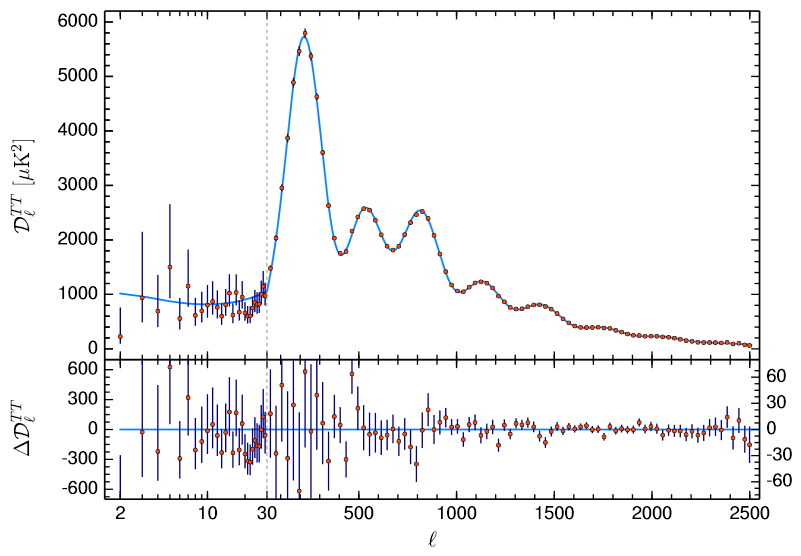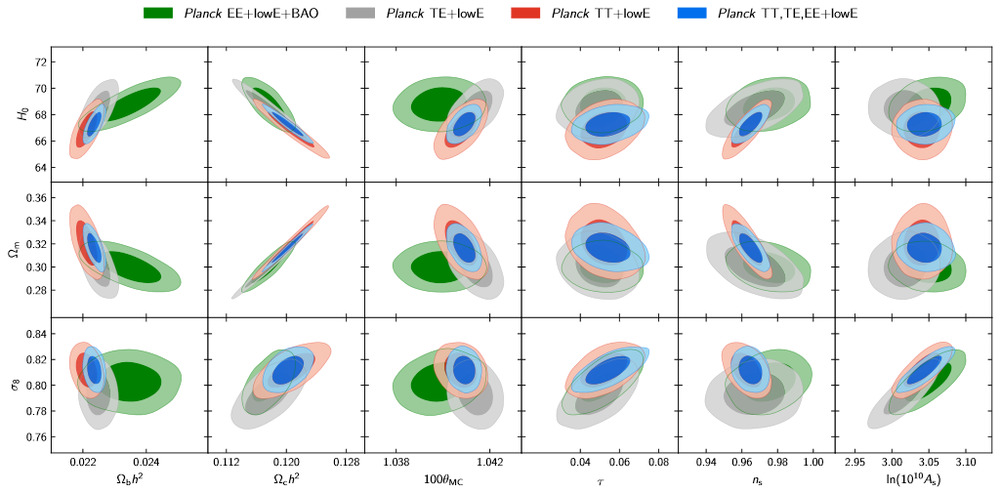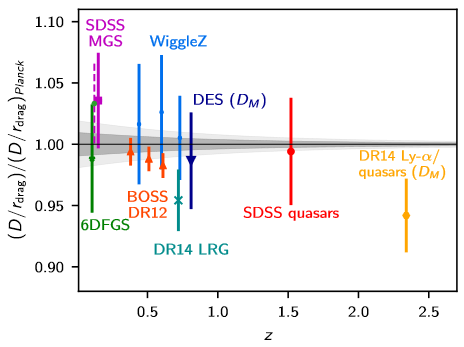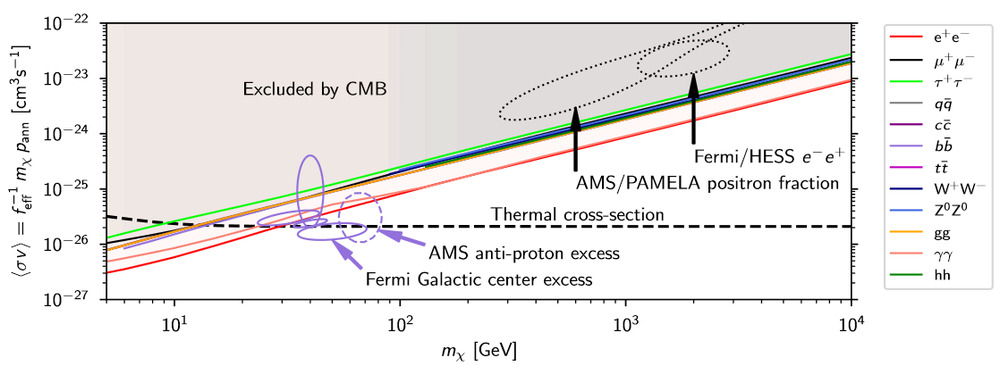mollwollfumble said:
Tau.Neutrino said:
Scientists Say They’ve Determined The Total Amount of Matter in The Universe
The stuff that makes up our Universe is tricky to measure, to put it mildly. We know that most of the Universe’s matter-energy density consists of dark energy, the mysterious unknown force that’s driving the Universe’s expansion. And we know that the rest is matter, both normal and dark.
more…
With the Planck cosmology result from the year 2018, that was pretty much a given.
See https://arxiv.org/pdf/1807.06209
Oh, I see. “Submitted on 17 Jul 2018 (version 1), last revised 14 Sep 2020 (version 3)”. So the current version is brand new, hot off the press.
I used to get so frustrated at how long it took results from the Planck satellite to get publicly released. WMAP data was first released after one year. We’re only just now getting this from the Planck satellite after eleven years.
In the following graph, the famous power spectrum from cosmology, the solid line is the Lambda cold dark matter theory. Or to put it another way, Einstein was right. That means we can throw all of “quintessence”, “phantom energy” and “MOND” in the dustbin. It also means we can discard “big rip” cosmology. There’s nothing mysterious about dark energy.
I don’t know it this also confirms cosmic inflation, but it certainly doesn’t contradict it.

We’ve had several threads recently about disagreement over the value of the Hubble constant. Have a look at the top row in the next chart, the Hubble constant is H_0. As for disagreement, there isn’t any. The value is in the range of 67 to 68 km/s/MPc.
The middle row is the topic of this thread, the total amount of matter in the universe. Again there’s no conflict. The value is in the range 31% to 32%.

Here it is in table form. The age of the universe is 13.8 billion years, give or take 25 million years.


The next chart compares Planck results (grey shading) with those from other independent surveys. The only other independent survey that even comes close to Planck in accuracy is BOSS (baryon acoustic oscillations). So it will be worthwhile keeping an eye on BOSS in the future.

So, as far as cosmology is concerned, it’s all done and dusted.
Turning to particle physics beyond the standard model, Planck also manages to rule out axions at the 95% confidence level. Other experiments have ruled them out at higher confidence levels than that. Planck doesn’t rule out supersymmetry, we have to turn to the LHC for that.
Planck puts an upper limit on the possible mass of the hypothetical “sterile neutrino” of 1.3 eV, with a more reasonable upper limit of 0.65 eV. This happens to be very similar to the maximum upper limit on the mass, from other sources, of the electron neutrino.
When it comes to element abundances in the early universe (following Alpher, Bethe, Gamow), the paper points out that systematic uncertainties have not yet totally been sorted out and may be quite big. But ignoring these possible systematic errors, primordial helium accounts for 24.7% of primordial elements. Primordial deuterium is 2.5e-5 times primordial hydrogen. Nothing new from Planck about Tritium and Lithium abundances.
The following figure shows the constraint on the dark matter annihilation cross section vs dark matter mass from Planck. Planck data does not rule out the famous Fermi galactic centre excess or the AMS antiproton excess as possible contenders for dark matter annihilation.

Any questions?



